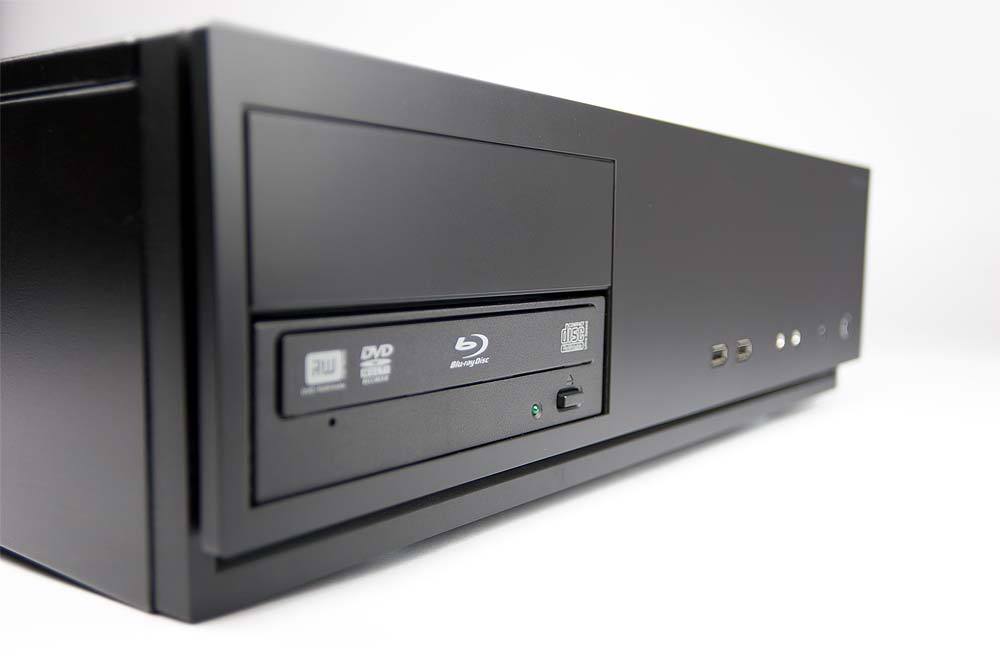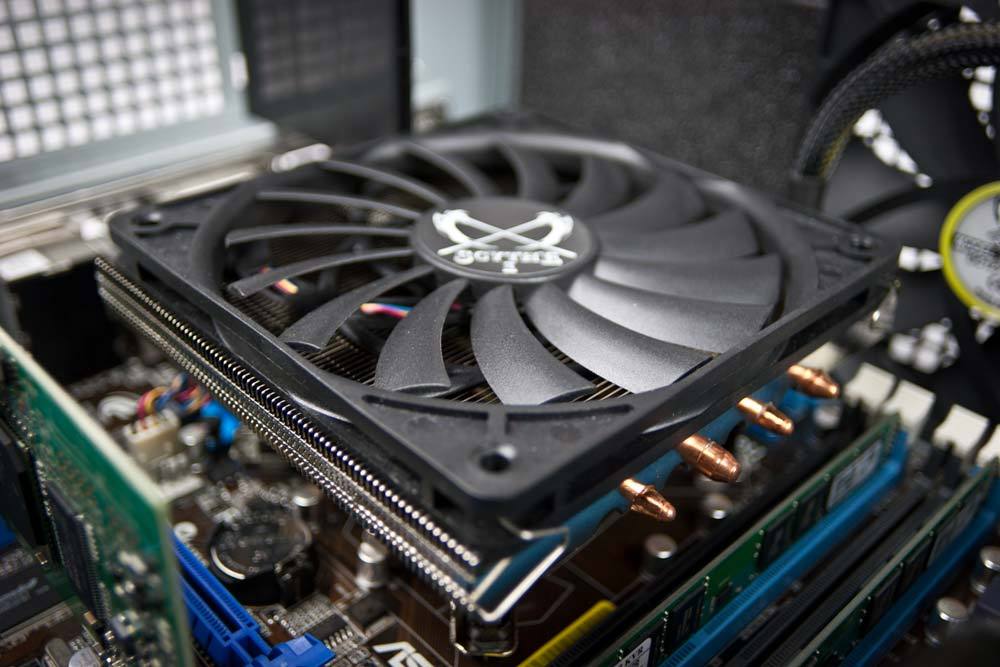Gaming At 1920x1080: AMD's Trinity Takes On Intel HD Graphics
Think you're pretty snazzy because your integrated graphics core plays mainstream games at 1280x720? We're on to bigger and better things, like modern titles at 1920x1080. Can AMD's Trinity architecture push high-enough frame rates to make this possible?
Professional Opinion: Gaming On Integrated Graphics
Jon Bach started Puget Systems in 2000, a time when small, local system builders could wage war more successfully against the big brands through specialization and experimentation. Over the years, Puget Systems gained a reputation for high-end performance, including with HTPCs. By 2009, the company had its Serenity line, which relied on considerable design testing to achieve a finished product significantly more quiet than most competitors. Few, if any, system builders left in America have Puget’s experience in crafting fast PCs with the acoustics someone in a theater environment would demand. This is why we sought out Bach for his thoughts on gaming in the living room on an integrated graphics engine.

Tom's Hardware: Let’s start with the big question: Are today’s HTPCs ready to tackle 1920x1080 gaming?
Jon Bach: There are all types of gaming, of course. There are those who are very casual gamers—a little Angry Birds here, a little The Sims 3 there. Integrated graphics today will handle those titles just fine. Even at 1080p, no problem. But then there’s higher-end gaming. Steam’s Big Picture is bringing a lot of attention to this space. I play some Battlefield 3 myself, and I wouldn’t even think of running that on integrated graphics, even at lower resolutions.
That isn’t to say HTPCs can't meet those needs. We build PCs for home theaters that can handle intense gaming. They just need a mid- or high-range discrete video card. We can build PCs like that and keep them quiet too. Even better, modern video cards have such low idle power draw that they work out very nicely, becoming nearly silent during movie and TV playback, and then spinning up as needed during intense gaming. Where we’ve hit more of an obstacle is actually in making sure the cabinet the PC is inside is cooled well. Not many people think about that, so we have to be very careful to bring it up, and help each client plan accordingly.
Tom's Hardware: Our initial gaming results with Core i3 and A8/A10 are pretty encouraging. We’re seem to be "getting there," assuming that integrated hardware evolves more quickly than the games over time. Do you see this happening? Will on-die logic accommodate ever more of the gaming field as we go forward?
Jon Bach: It’s all relative. Our customers wouldn't be happy with 30 FPS at medium settings. They want 60 FPS at Ultra settings. A big reason why people go to the PC platform for gaming is for the quality improvement. At Puget Systems, it is rare for us to sell a gaming-oriented PC with anything less than a GeForce GTX 560 Ti (now probably the GTX 660). People just want more. Of course, we serve the distinct niche of high-performance, high-quality PCs. To us, integrated chipset graphics are still a long ways off—even the new platforms coming up.
However, I will say that it is definitely moving in that direction. Back in 2008, you needed to spend $1000 in multi-GPU setups to run games at their highest quality settings. Today, a single GeForce GTX 670 does it with ease. You can see the trend. I think that, for the casual gamer, we’re getting very close. For the hardcore gamer, they’re going to be looking for more performance for quite some time to come.
Get Tom's Hardware's best news and in-depth reviews, straight to your inbox.
In a way, isn’t this a microcosm of the PC versus tablet talk? Some people say, "Tablets are getting so powerful now, they can do almost everything I need." Then you have the other camp saying, "No way. I need a lot more processing power." Both are true. There is just a huge variation in the kind of performance that people want and need.

Tom's Hardware: In building our test system in a SilverStone HTPC case, we had to make special consideration for the heat sink height, and our Blu-ray drive was too long to fit. Those are pretty obvious snafus once you’ve run into them. What are some of the less obvious design concerns that DIYers should watch out for when building HTPCs?
Jon Bach: The physical compatibility of the CPU cooler is a common issue, for sure. Proper airflow is another concern, especially for gaming. If you run a discrete video card, many HTPC chassis are not very good about getting fresh air to that part of the chassis. Height of the video card is another common issue. Many video cards now run the heat sink higher than the PCI Express slot, which conflicts with the top panel many times. Some motherboards have right-angle SATA ports coming off the side of the motherboard, and many HTPC chassis do not leave adequate room for this, leaving you only able to use one SATA port per row, and only with right-angle SATA connectors.
Current page: Professional Opinion: Gaming On Integrated Graphics
Prev Page Can The Latest Integrated Graphics Engines Game At 1080p? Next Page Professional Opinion: Gaming On Integrated Graphics, Cont.-
azathoth Seems like a perfect combination for a Casual PC gamer, I'm just curious as to the price of the Trinity APU's.Reply -
luciferano They both have graphics that have HD in their name, but AMD's HD graphics are more *HD*, lol.Reply -
Nintendo Maniac 64 Err... did we really need both the A10-5800k and the A8-5600k? Seeing how both are already 100w unlocked CPUs, surely something like an A10-5800k vs a 65w A10-5700 would have been more interesting for an HTPC environment...Reply -
mayankleoboy1 Consoles set the bar for game developers. These iGPU's are comparable to the consoles and thats why games will run smooth here.Reply
With next gen consoles coming out next year, game devs will target them. Hence the minimum standard for games will rise, making the next gen games much slower on the iGPU's. So both AMD and Intel will have to increase performance much more in the next 1-2 years.
tl;dr : next gen games will run poorly on these igpu's as next gen consoles will set the minimum performance standard. -
mousseng Reply
Keep in mind, though, that that's exactly what's going to allow AMD and Intel to advance their hardware faster than games will, as they were discussing in the article (first page of the interview). Look how far Fusion and HD Graphics have come over the past 3 years, and look how long the previous console generation lasted - if that trend is anything to go by, I'm sure integrated graphics could easily become a viable budget gaming option in the next few years.9537609 said:tl;dr : next gen games will run poorly on these igpu's as next gen consoles will set the minimum performance standard. -
falchard Since when as AMD or nVidia actually taken on Intel graphics? Thats a bit insulting considering the disproportionate results time and time again.Reply -
luciferano mayankleoboy1Consoles set the bar for game developers. These iGPU's are comparable to the consoles and thats why games will run smooth here.With next gen consoles coming out next year, game devs will target them. Hence the minimum standard for games will rise, making the next gen games much slower on the iGPU's. So both AMD and Intel will have to increase performance much more in the next 1-2 years.tl;dr : next gen games will run poorly on these igpu's as next gen consoles will set the minimum performance standard.Reply
Actually, the A10 and A8 have somewhat superior graphics compared to current consoles. Current consoles can't even play in 720p as well as these AMD IGPs played 1080p despite being a more optimized platform, so that this is true is kinda obvious IMO. Also, new games would simply mean dropping resolution for these APUs. They wouldn't be unable to play new games, just probably at 1080p and 16xx by 900/10xx resolutions too.
Intel probably isn't very motivated by gaming performance for their IGPs and they're supposedly making roughly 100% performance gains per generation with their top-end IGPs anyway, so they're working on growing IGP performance. AMD also gets to use GCN in their next APU and I don't think that I need to explain the implications there, especially if they go the extra mile with using their high-density library tech too.